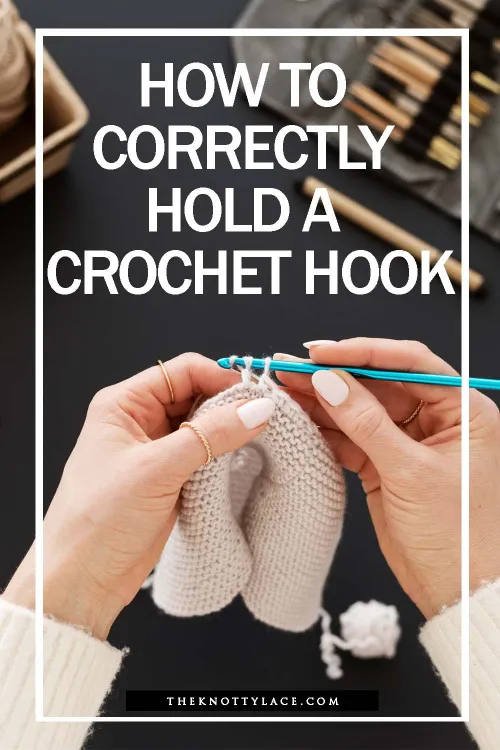
Do you find yourself feeling frustrated with your crochet technique, despite hours of practice? Are your wrist sore and your hands feeling tired after just a short time of crocheting?
The main culprit could just be the way you’re holding your crochet hook.
Whether you are left-handed or right-handed, properly holding your crochet hook can make a significant difference in your crocheting experience, and not surprisingly there are a few ways to improve your technique that you may not have considered before. Yes! Read on.
Let’s explore the correct way to actually be holding a crochet hook and I’ll also be sharing with you a few great solutions that may enhance your crochet skills!
This post may contain affiliate links designed to provide a commission on purchases made at no cost to you. As an affiliate, I earn from qualifying purchases that support my work in providing new content and information on this site.
How to Identify the Best Crochet Hook for You
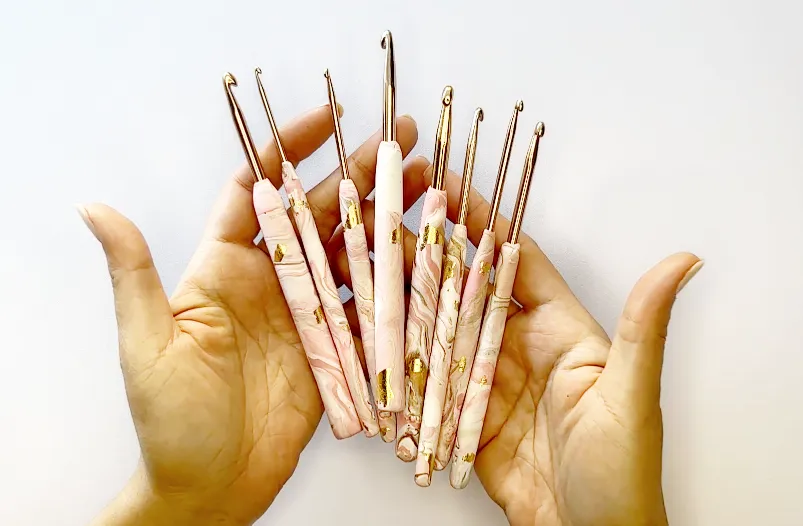
First things first – choosing the right crochet hook!
There are different materials, weights, and handle shapes that should be taken into account. Some people prefer lightweight hooks such as aluminum hooks or plastic hooks, while others find heavier hooks made of wood more suitable.
The most important factor to consider is the handle shape and size. It should fit comfortably in your hand allowing for a relaxed and secure grip.
Now, the secret sauce to a perfect hook is to find the best ERGONOMIC hook that fits your the best.
There are so many great choices to choose from and It’s best to try out different options, seek recommendations from fellow crocheters, and read reviews to gather insights from others’ experiences.
Here are a few of my personal favorite hooks that I have tried and tested.
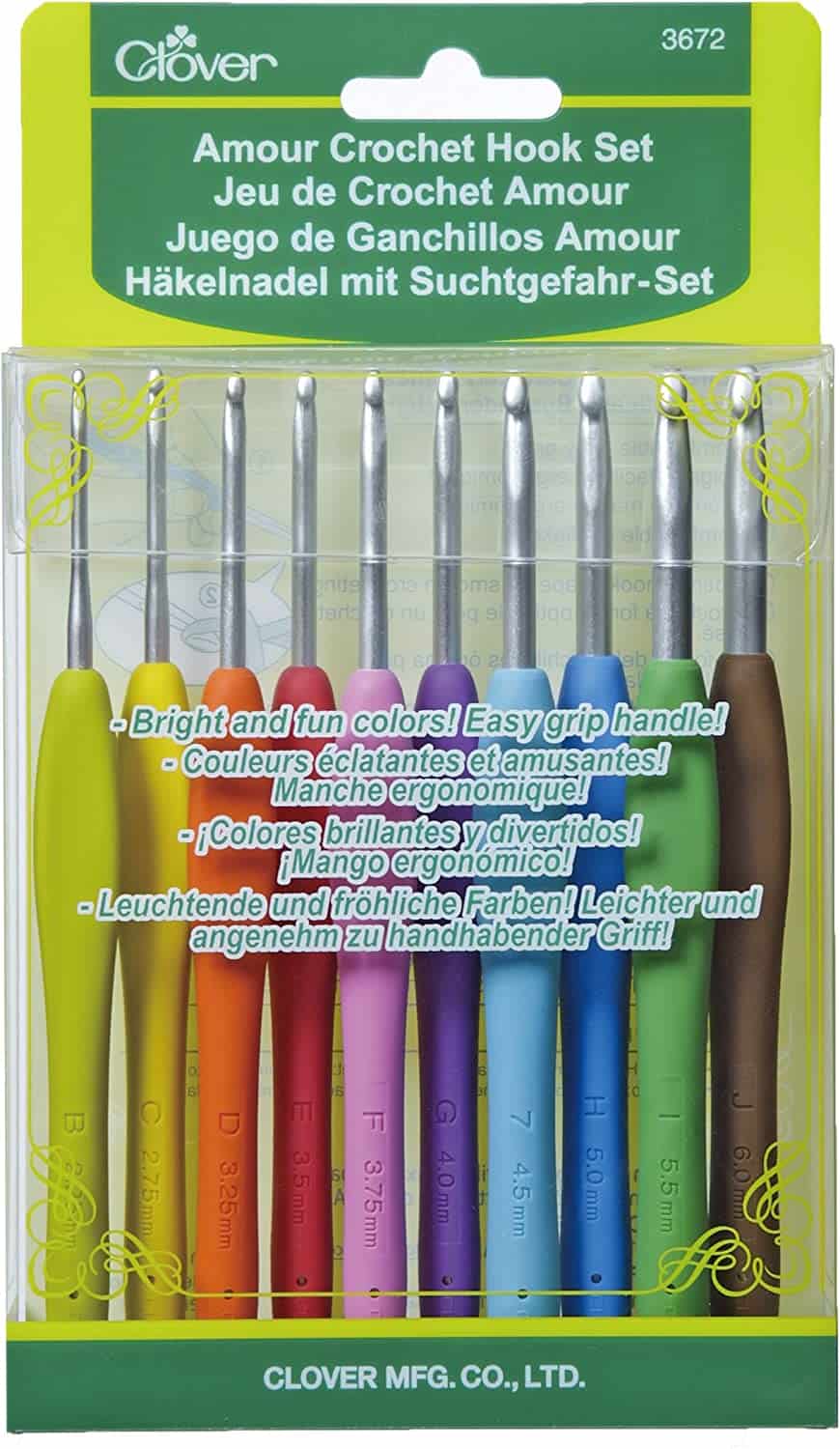
Clover Amour Hooks – This is my all-time favorite hook. Clover offers a wide range of ergonomic crochet hooks with cushioned handles.
Their Soft Touch Crochet Hooks feature a comfortable grip and are designed to reduce hand fatigue during long crocheting sessions.
I tend to hold my hook slightly on the higher side and the elastomer rubber cushion goes all the up. It is soft to the touch and is extremely lightweight.
These Clover Hooks come in a single hook size or in a variety pack. Give one size a try first, and see how it feels. Buying the whole set is ideally more economical.
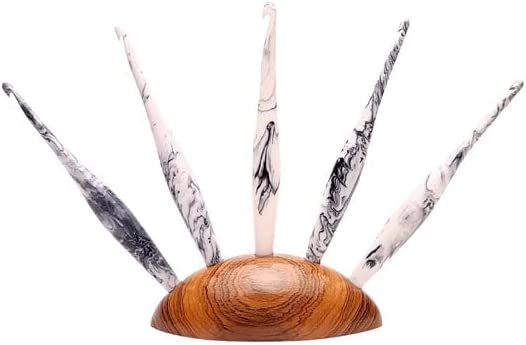
Furls Hook – This type of hook is aesthetically pleasing, with its unique shape that fits naturally in the hand, providing a comfortable grip and reducing strain.
Furls is renowned for its luxurious and ergonomic crochet hooks and are available in various materials, including wood and resin, offering different weight options to suit individual preferences.
I know a lot of people swear by this style, but unfortunately, this one does not really work for me.
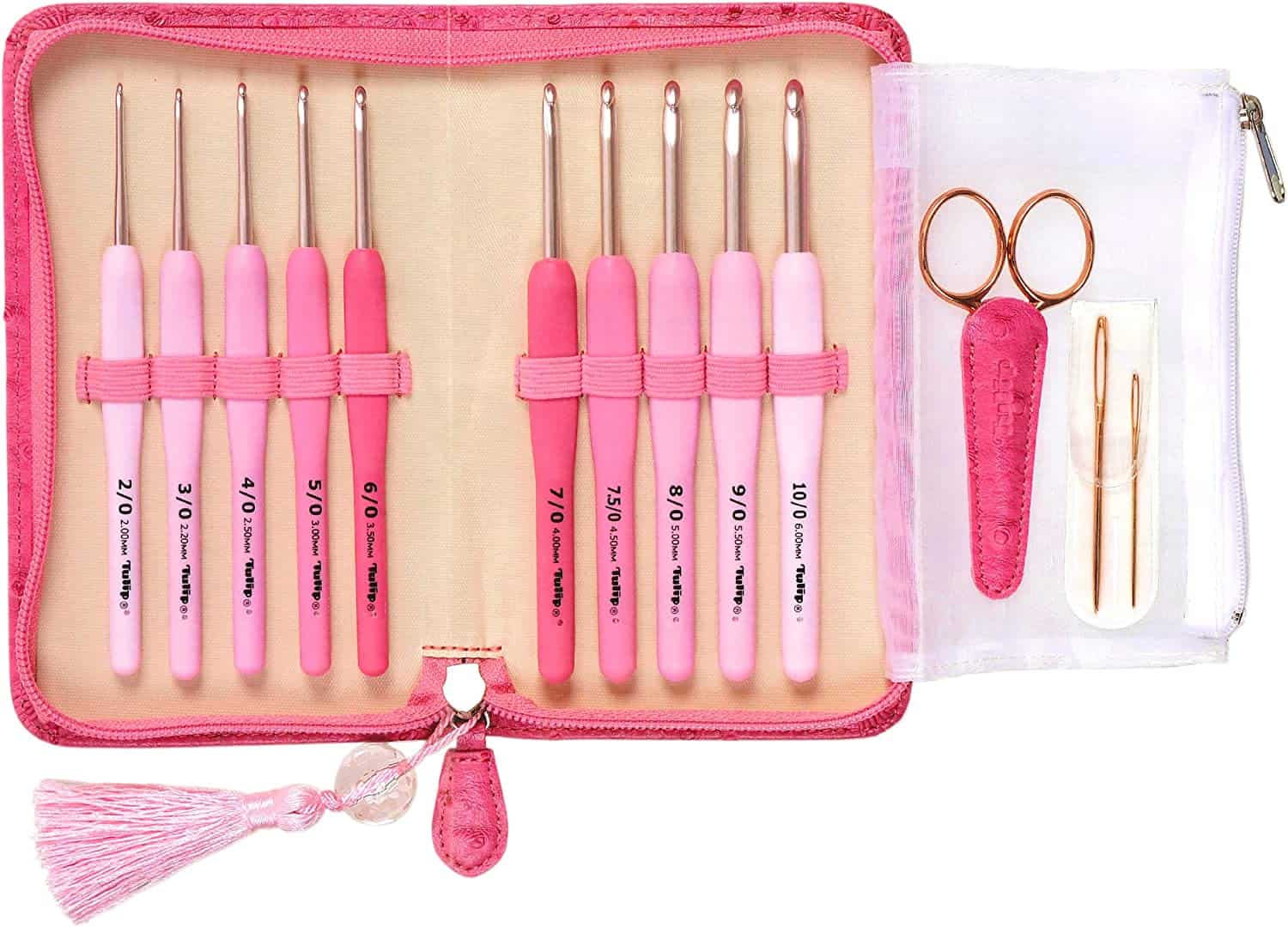
Tulip Etimo Hooks: Tulip hooks are another great option. Tulip produces ergonomic crochet hooks that prioritize comfort and functionality.
Their Etimo series features cushioned handles and a smooth, lightweight design that reduces hand and wrist fatigue.
Tulip hooks are made of high-quality materials and are known for their durability.
The Benefits of Using Ergonomic Crochet Hooks
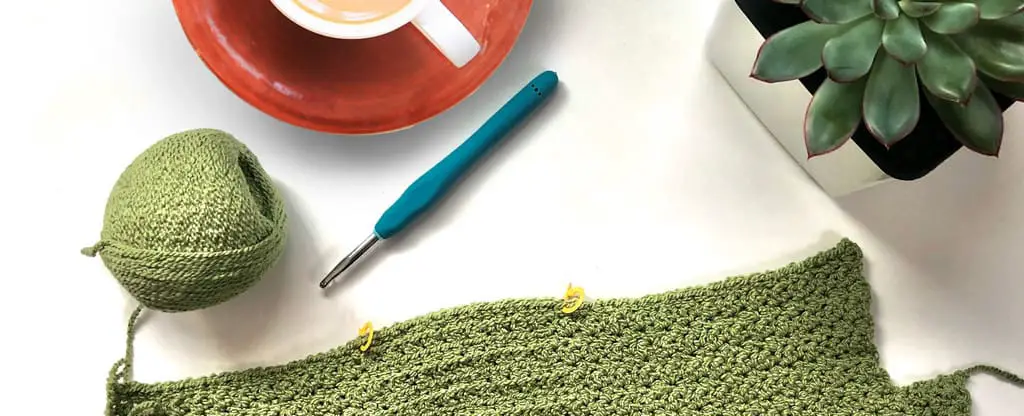
So, why should you consider using ergonomic crochet hooks? The benefits are plenty.
Firstly, ergonomic hooks offer enhanced comfort, allowing you to crochet for longer periods without experiencing fatigue or discomfort.
The cushioned handles provide a soft grip, reducing strain on your hands and wrists. Secondly, ergonomic hooks improve grip and control.
The ergonomic shape fits naturally in your hand, providing a secure grip and better control over your stitches. This, in turn, leads to more precise and consistent work.
Lastly, ergonomic hooks can increase your speed and efficiency. With their comfortable grip and improved control, you’ll find yourself crocheting faster and more efficiently than ever before.
Inline hooks vs. Tapered hooks
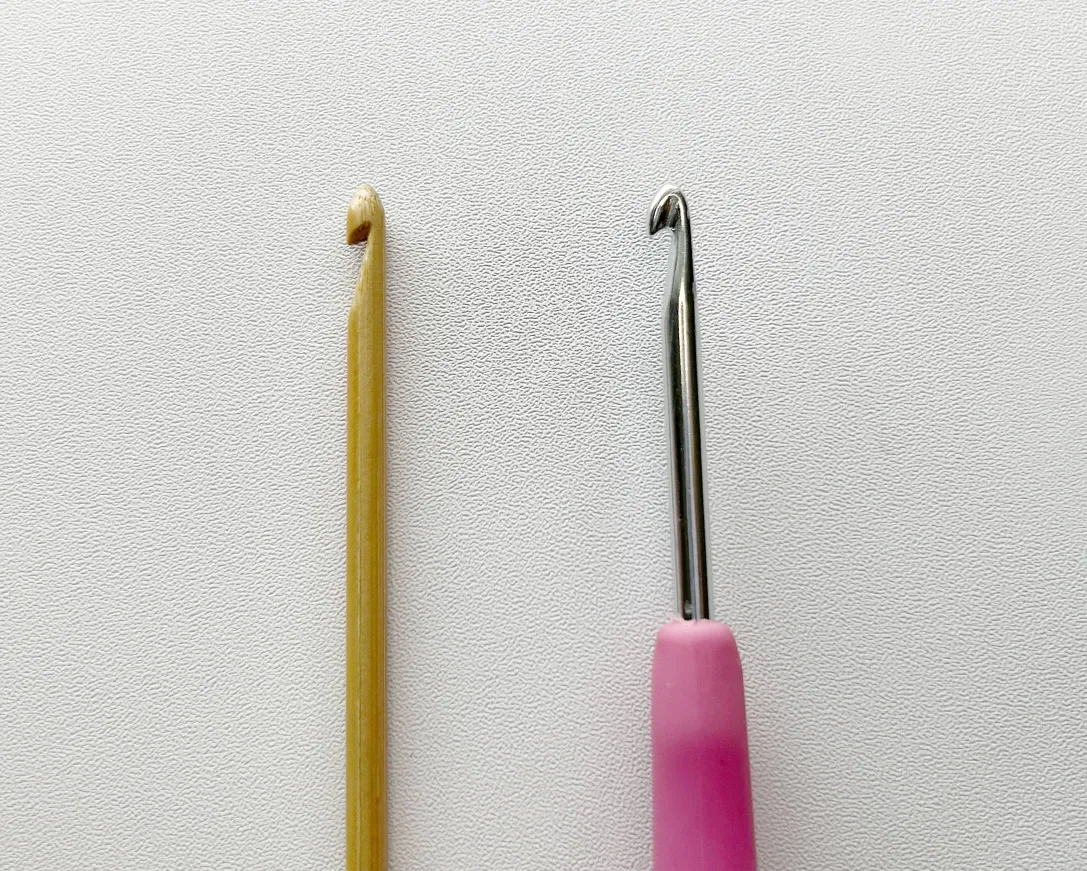
When it comes to choosing a crochet hook, there are two main types to consider – inline hooks and tapered hooks.
The difference between the two lies in the shape of the hook’s head.

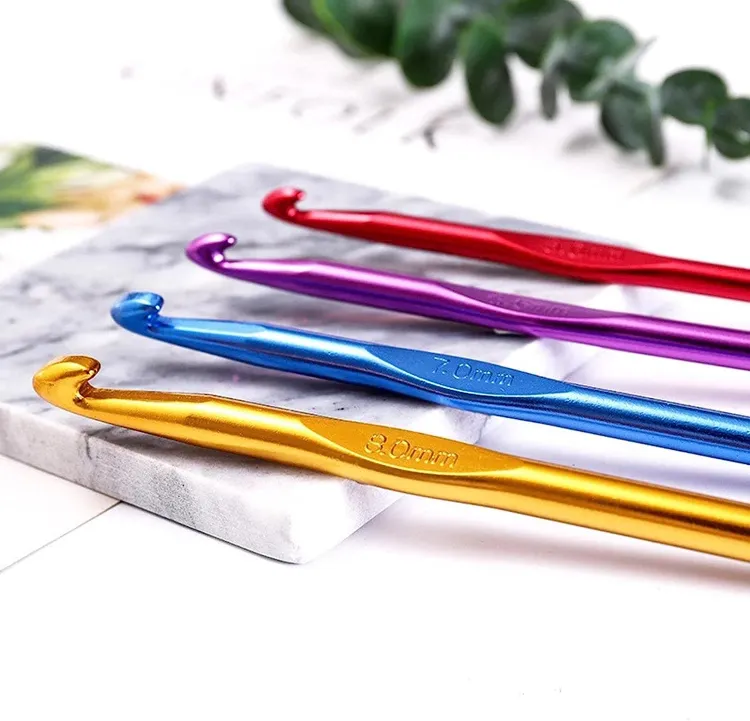
Inline hooks have a straight, cylindrical shaft that transitions directly into the hook head, while tapered hooks have a more gradual slope from the shaft to the hook head.
So, what does this mean for your crochet technique? Well, it really comes down to personal preference. Some crocheters swear by inline hooks, as they find that the straight hook head makes it easier to insert into tight stitches.
Others prefer tapered hooks, as the gradual slope provides a smoother transition from the shaft to the hook head, which can make it easier to work with thicker yarns.
Ultimately, the best way to determine which type of crochet hook is right for you is to try them both out and see which one feels most comfortable in your hand.
Techniques for Holding a Crochet Hook
There are many different ways of working with a crochet hook, however, there are only two main ways most people hold their crochet hooks, the pencil grip or the knife grip.
Let’s explore the differences between these two styles, and how they can affect your crocheting technique.
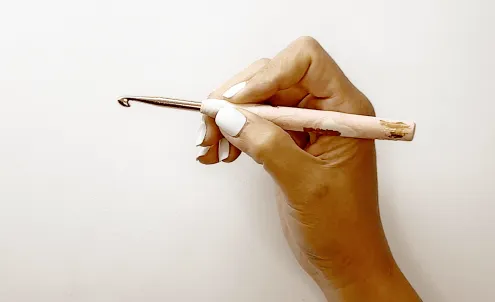
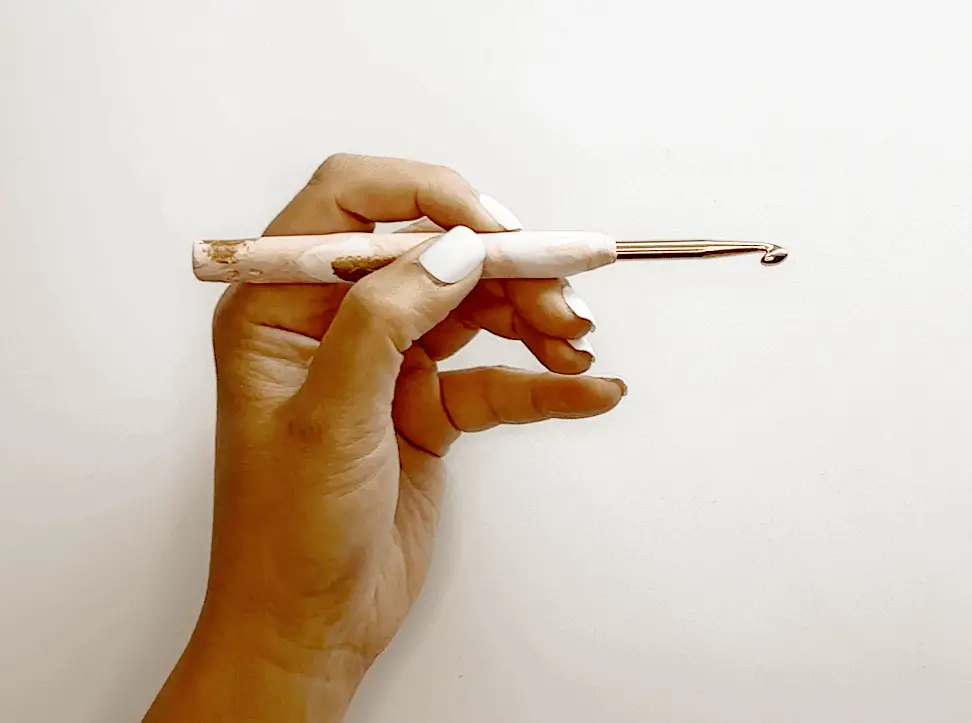
The pencil grip or the underhand grip involves holding the hook the way you would hold a pencil, with the hook resting between your thumb and index finger and the other fingers supporting from below.
The pencil method can provide more control and precision, as you have greater dexterity and can make small adjustments more easily. It also allows you to hold the yarn more tightly, which can be beneficial when working with delicate or slippery yarns.
However, some crocheters find that the pencil grip can be uncomfortable or put too much strain on the hand and wrist.
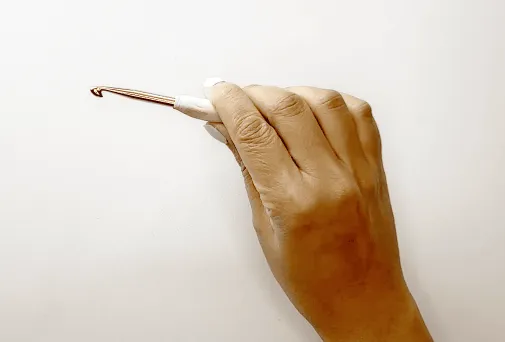
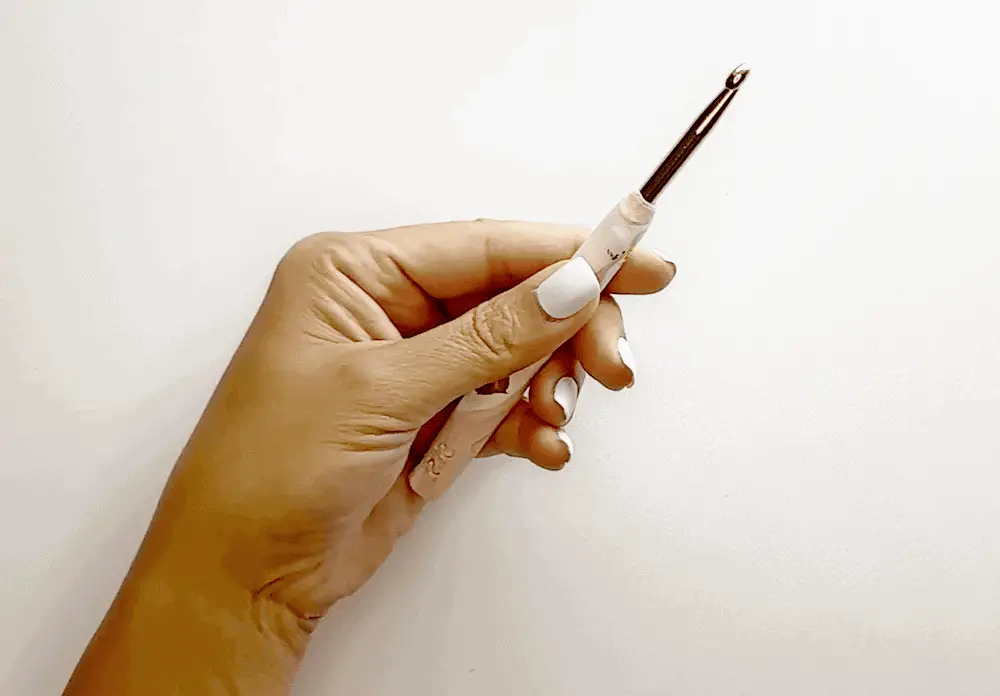
The knife grip or the overhand grip, on the other hand, involves holding the hook like you would hold a knife, with the hook resting against the side of your index finger and your thumb supporting from above.
The knife method can feel more natural and relaxed for some crocheters. It can also be easier to maintain tension with this grip, as your fingers are free to move more independently.
However, some people find that it can be more difficult to achieve precise stitches with the knife grip, as you have less control over the hook’s movements.
I use the Knife method and find this to be the most comfortable way for me and have no issues 🙂
At the end of the day, there is no right way or wrong way of holding a crochet hook, but adapting to a new grip may take some time and practice.
Ultimately, the best grip style for you will depend on your personal preferences and comfort level. It’s a good idea to experiment with different grips and see which one feels more natural and allows you to crochet with ease.
Regardless of which grip you choose, it’s important to take breaks and stretch your hands regularly to prevent discomfort or injury. (more on this below)
CHECK OUT MY LATEST VIDEO
Common Mistakes Beginners make
![little-girl-sitting-sofa-with-threads-home-leisure-concept-crocheting[1]](https://www.theknottylace.com/wp-content/uploads/2023/06/little-girl-sitting-sofa-with-threads-home-leisure-concept-crocheting1.webp)
As a crochet beginner, it’s easy to fall into bad habits that can hinder your progress and cause discomfort.
One of the most common mistakes is holding your hook too tight. This puts unnecessary strain on your hand and fingers, making it difficult to maneuver the hook and yarn.
Finding the right balance between grip and control is essential for achieving the best results. Additionally, it’s important to hold your hook in a way that feels comfortable for you.
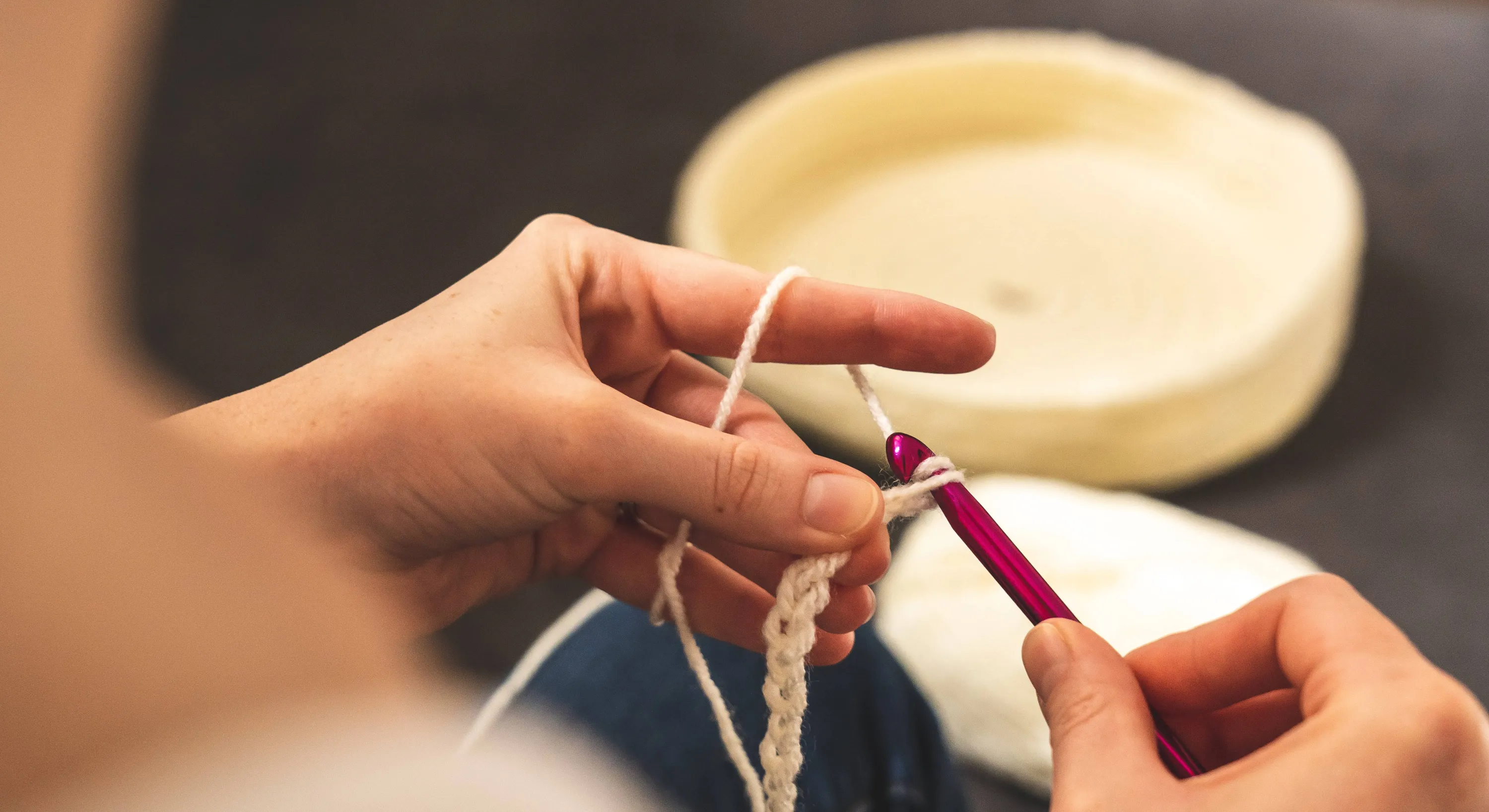
The second most common mistake is having or not having enough tension on the non-dominant hand that is holding the working yarn.
I’ve seen hundreds of different styles of how people hold their working yarn, and there is no right or wrong way. But if it does not pull smoothly or leaves a mark on your finger, then you might want to rethink how you’re holding your yarn.
The easiest way is to make sure that it glides smoothly without pulling or tugging your skin. It should also not be painful or stressful on the hand.
Keep trying a variety of positions and see which ones feel right for you.
Other Tips to Improve Crochet Technique
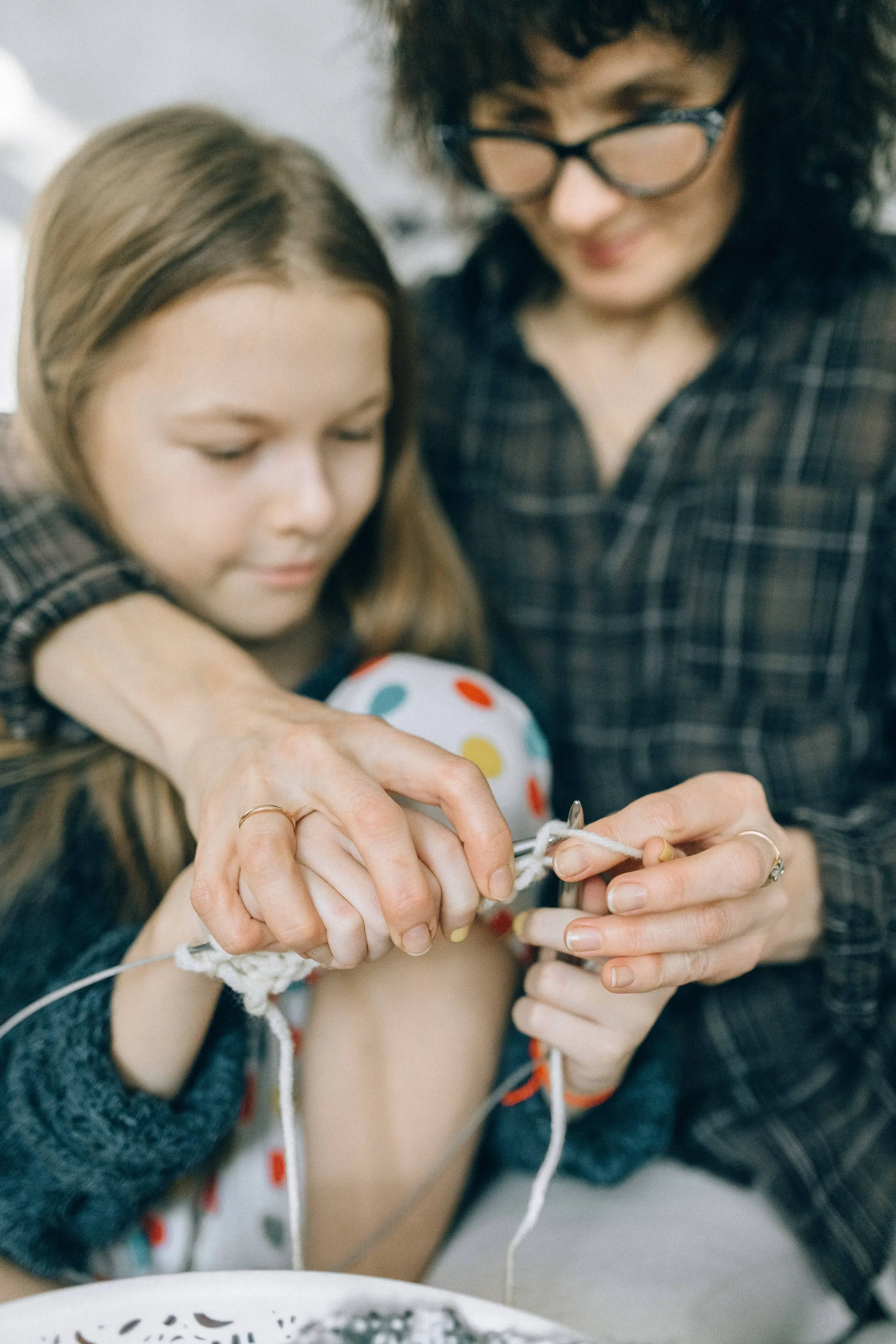
Good back support and keep your hands and wrists aligned with your work. Consistent tension control is another crucial aspect.
Practice maintaining an even tension of the yarn while crocheting to ensure uniform stitches.
Invest in a good tension ring and a good-quality crochet hook. Here are some other great tools to consider. And if you are new to crochet, don’t forget these basic essentials must haves!
Finally, don’t be afraid to explore different crochet stitch techniques. Learning new stitches and patterns will not only expand your skills but also keep your crochet projects exciting and varied. Check out some of our free crochet patterns here
Remember to keep your grip loose and relaxed. Tightly holding the hook and yarn can lead to hand fatigue and tension problems in your wrists and arms.
Reducing Hand Pain
![woman-holding-her-wrist-symptomatic-office-syndrome[1]](https://www.theknottylace.com/wp-content/uploads/2023/06/woman-holding-her-wrist-symptomatic-office-syndrome1.webp)
Even with the correct technique and plenty of practice, you may still experience some discomfort in your hands.
Crocheting for extended periods of time can cause hand and joint pain, stiffness, and even numbness.
Luckily, there are a variety of ways you can take to reduce this discomfort and make crocheting more enjoyable.
The most important thing is to take frequent breaks. Setting a timer for every 30-60 minutes and taking a five-minute break can help prevent hand fatigue and tension in your arms and wrist pain. During these breaks, stretch and move your hands and fingers to help reduce stiffness.
Consider using heat therapy to help reduce hand pain. A warm compress or heating pad can help increase blood flow and reduce inflammation in your hands. This can be especially beneficial if you suffer from arthritis or other conditions that cause hand pain.
By following these tips, you can reduce hand pain and make crocheting a more enjoyable and comfortable experience.
Practice Makes Perfect
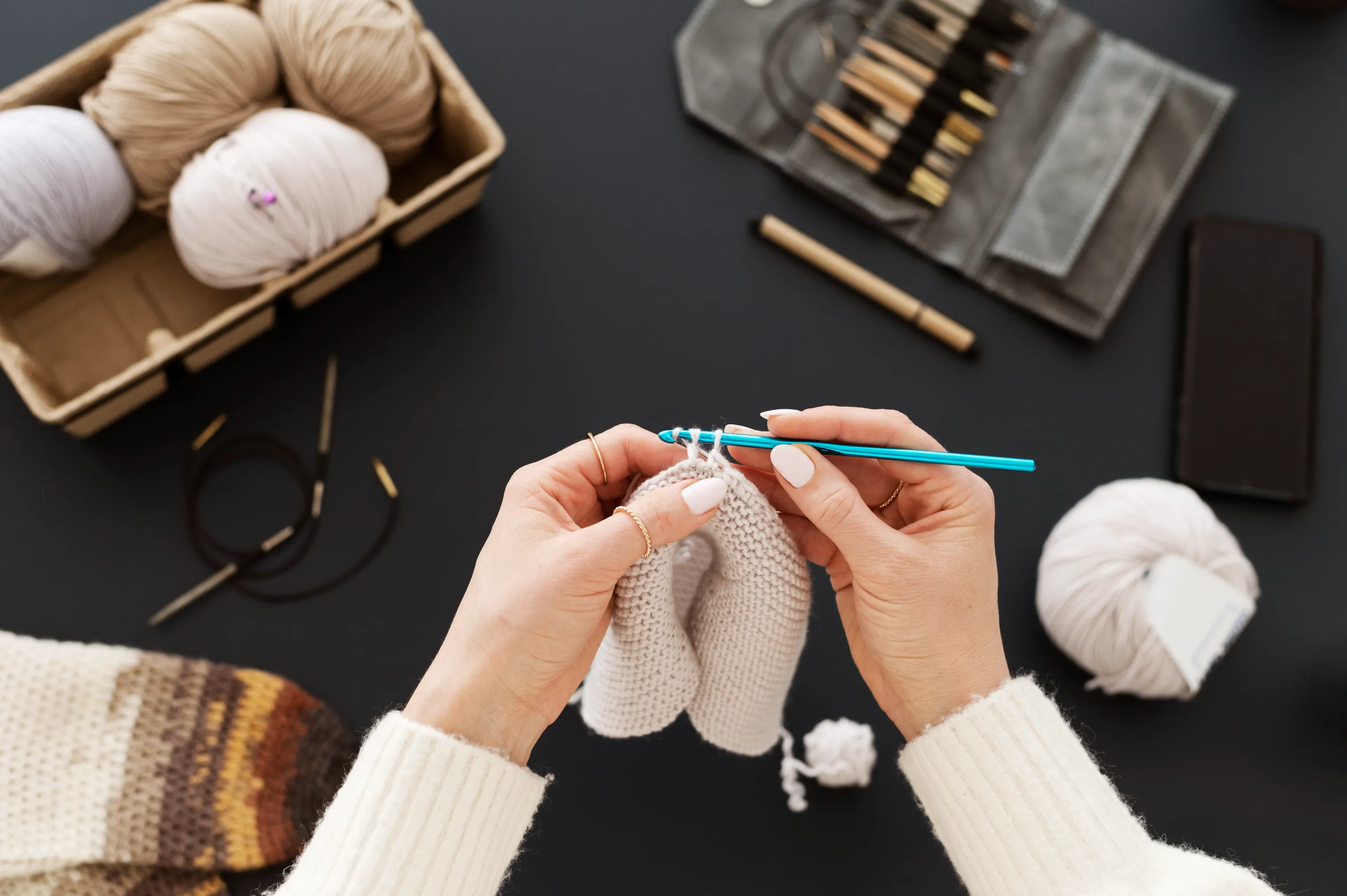
As with any new skill, holding a crochet hook correctly takes practice. While it may feel awkward at first, the more you practice, the more natural it will become.
As you continue to practice, you may find that your grip loosens up even more, allowing you to crochet for longer periods without experiencing hand fatigue or tension in your wrists and arms.
The way you hold your crochet hook plays a significant role in your crocheting experience and the quality of your work. By considering ergonomic crochet hooks and adapting your grip, you can improve your technique and enjoy the craft even more.
Ergonomic hooks offer enhanced comfort, better grip and control, and increased speed and efficiency. Remember to choose the right ergonomic hook that suits your preferences, and practice holding it correctly for optimal results.
Combine these tips with maintaining proper posture, tension control, and exploring new stitch techniques, and you’ll elevate your crochet skills to new heights.
So, grab your crochet hook, embrace the surprising way, and watch your crochet projects flourish.
Join Our Mailing List
If you would like to receive free written patterns and video tutorials straight into your inbox, just click Subscribe to get into our mailing list.
Happy hooking,
Shaz 🧶

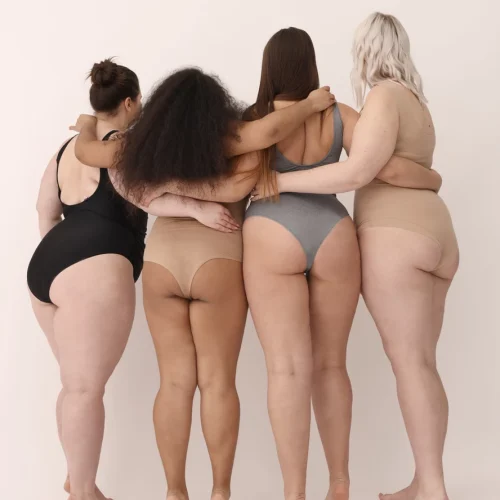





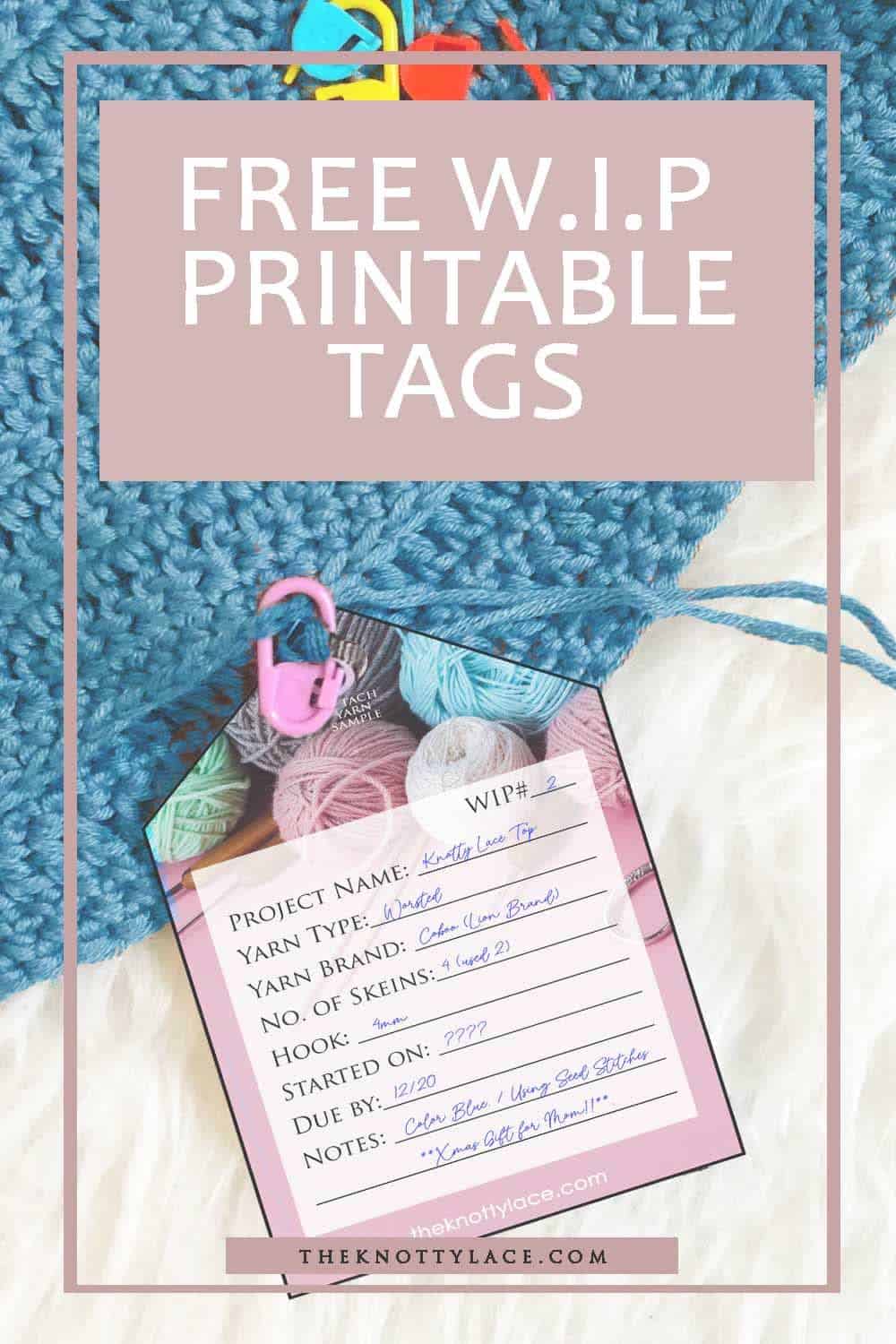

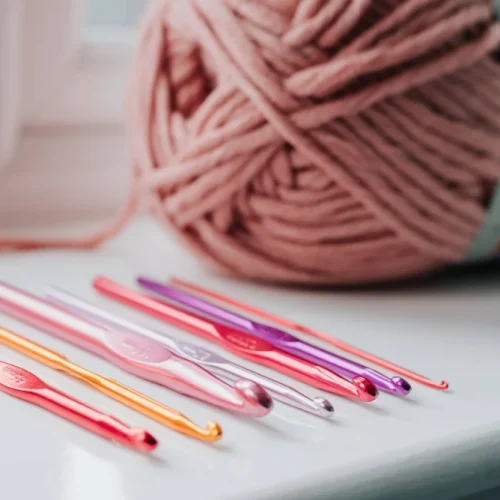


3 Responses
Love the tips love to crochet for hours and sometimes forget to take breaks so that was helpful stop for about five minutes after 20 or 30 minutes is a good idea thank you
Thank you. I’m always looking for new tips and techniques. Crocheting helps with my anxiety and depression
I’m glad you found this article helpful Charlotte. Thank you for sharing. 🙂 – Shaz